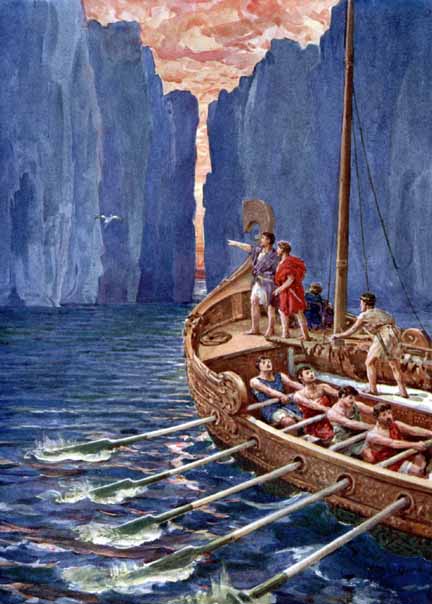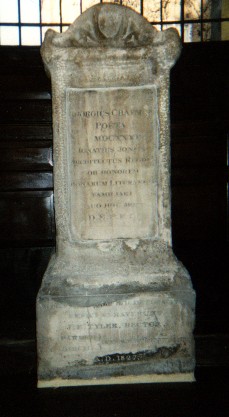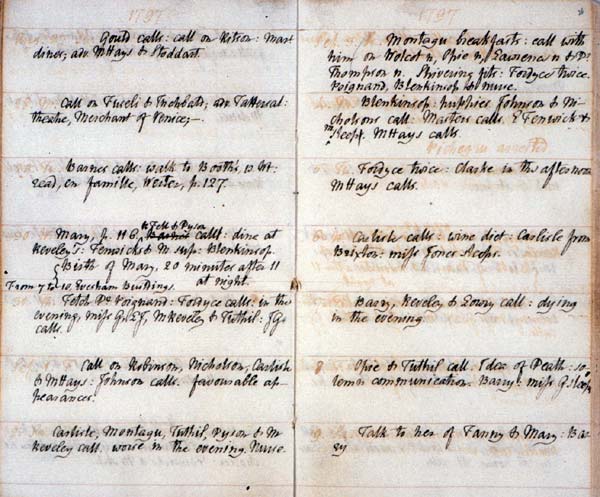|
The Revolt Of Islam
''The Revolt of Islam'' (1818) is a poem in twelve cantos composed by Percy Bysshe Shelley in 1817. The poem was originally published under the title ''Laon and Cythna; or, The Revolution of the Golden City: A Vision of the Nineteenth Century'' by Charles and James Ollier in December 1817. Shelley composed the work in the vicinity of Bisham Woods, near Great Marlow in Buckinghamshire, northwest of London, from April to September. The plot centres on two characters named Laon and Cythna, inhabitants of Argolis under Ottoman rule who initiate a revolution against its despotic ruler. Despite its title, the poem is not focused on Islam as a specific religion, though the general subject of religion is addressed, and the work draws on Orientalist archetypes and themes. The work is a symbolic parable on liberation and revolutionary idealism following the disillusionment of the French Revolution. Background In ''The Revolt of Islam, A Poem, in Twelve Cantos'' (1818), consisting of ... [...More Info...] [...Related Items...] OR: [Wikipedia] [Google] [Baidu] |
Percy Bysshe Shelley
Percy Bysshe Shelley ( ; 4 August 17928 July 1822) was one of the major English Romantic poets. A radical in his poetry as well as in his political and social views, Shelley did not achieve fame during his lifetime, but recognition of his achievements in poetry grew steadily following his death and he became an important influence on subsequent generations of poets including Robert Browning, Algernon Charles Swinburne, Thomas Hardy, and W. B. Yeats. American literary critic Harold Bloom describes him as "a superb craftsman, a lyric poet without rival, and surely one of the most advanced sceptical intellects ever to write a poem." Shelly's reputation fluctuated during the 20th century, but in recent decades he has achieved increasing critical acclaim for the sweeping momentum of his poetic imagery, his mastery of genres and verse forms, and the complex interplay of sceptical, idealist, and materialist ideas in his work. Among his best-known works are " Ozymandias" (1818), "O ... [...More Info...] [...Related Items...] OR: [Wikipedia] [Google] [Baidu] |
Spenserian Stanza
The Spenserian stanza is a fixed verse form invented by Edmund Spenser for his epic poem ''The Faerie Queene'' (1590–96). Each stanza contains nine lines in total: eight lines in iambic pentameter followed by a single 'alexandrine' line in iambic hexameter. The rhyme scheme of these lines is ABABBCBCC. Example stanza This example is the first stanza from Spenser's ''Faerie Queene''. The formatting, wherein all lines but the first and last are indented, is the same as in contemporary printed editions. Lo I the man, whose Muse whilome did maske, As time her taught, in lowly Shepheards weeds, Am now enforst a far unfitter taske, For trumpets sterne to chaunge mine Oaten reeds, And sing of Knights and Ladies gentle deeds; Whose prayses having slept in silence long, Me, all too meane, the sacred Muse areeds To blazon broad emongst her learned throng: Fierce warres and faithfull loues shall moralize my song. Possible influences Spenser's invention may have been influen ... [...More Info...] [...Related Items...] OR: [Wikipedia] [Google] [Baidu] |
British Poems
British may refer to: Peoples, culture, and language * British people, nationals or natives of the United Kingdom, British Overseas Territories, and Crown Dependencies. ** Britishness, the British identity and common culture * British English, the English language as spoken and written in the United Kingdom or, more broadly, throughout the British Isles * Celtic Britons, an ancient ethno-linguistic group * Brittonic languages, a branch of the Insular Celtic language family (formerly called British) ** Common Brittonic, an ancient language Other uses *'' Brit(ish)'', a 2018 memoir by Afua Hirsch *People or things associated with: ** Great Britain, an island ** United Kingdom, a sovereign state ** Kingdom of Great Britain (1707–1800) ** United Kingdom of Great Britain and Ireland (1801–1922) See also * Terminology of the British Isles * Alternative names for the British * English (other) * Britannic (other) * British Isles * Brit (other) * Briton ( ... [...More Info...] [...Related Items...] OR: [Wikipedia] [Google] [Baidu] |
1817 Poems
Events January–March * January 1 – Sailing through the Sandwich Islands, Otto von Kotzebue discovers New Year Island. * January 19 – An army of 5,423 soldiers, led by General José de San Martín, starts crossing the Andes from Argentina, to liberate Chile and then Peru. * January 20 – Ram Mohan Roy and David Hare found Hindu College, Calcutta, offering instructions in Western languages and subjects. * February 12 – Battle of Chacabuco: The Argentine–Chilean patriotic army defeats the Spanish. * March 3 ** President James Madison vetoes John C. Calhoun's Bonus Bill. ** The U.S. Congress passes a law to split the Mississippi Territory, after Mississippi drafts a constitution, creating the Alabama Territory, effective in August. * March 4 – James Monroe is sworn in as the fifth President of the United States. * March 21 – The flag of the Pernambucan Revolt is publicly blessed by the dean of Recife Cathedral, Brazil. Ap ... [...More Info...] [...Related Items...] OR: [Wikipedia] [Google] [Baidu] |
Oman
Oman ( ; ar, عُمَان ' ), officially the Sultanate of Oman ( ar, سلْطنةُ عُمان ), is an Arabian country located in southwestern Asia. It is situated on the southeastern coast of the Arabian Peninsula, and spans the mouth of the Persian Gulf. Oman shares land borders with Saudi Arabia, the United Arab Emirates, and Yemen, while sharing maritime borders with Iran and Pakistan. The coast is formed by the Arabian Sea on the southeast, and the Gulf of Oman on the northeast. The Madha and Musandam exclaves are surrounded by the United Arab Emirates on their land borders, with the Strait of Hormuz (which it shares with Iran) and the Gulf of Oman forming Musandam's coastal boundaries. Muscat is the nation's capital and largest city. From the 17th century, the Omani Sultanate was an empire, vying with the Portuguese and British empires for influence in the Persian Gulf and Indian Ocean. At its peak in the 19th century, Omani influence and control extended across ... [...More Info...] [...Related Items...] OR: [Wikipedia] [Google] [Baidu] |
Symplegades
The Symplegades (; el, Συμπληγάδες, ''Symplēgádes'') or Clashing Rocks, also known as the Cyanean Rocks, were, according to Greek mythology, a pair of rocks at the Bosphorus that clashed together whenever a vessel went through. They were defeated by Jason and the Argonauts, who would have been lost and killed by the rocks except for Phineus' advice. Jason let a dove fly between the rocks to see exactly how fast they'd have to row to beat the rocks; the dove lost only its tail feathers. The Argonauts rowed mightily to get through and lost only part of the stern ornament. After that, the Symplegades stopped moving permanently. The European rock is usually identified with an islet, about wide and long, which stands about off the shore of a village called Rumelifeneri ('Lighthouse of Rumeli’), and is connected to it by a modern concrete jetty. At its highest point, there is an ancient altar known as the Pillar of Pompey, though it has nothing to do with Pompey. D ... [...More Info...] [...Related Items...] OR: [Wikipedia] [Google] [Baidu] |
Constantinople
la, Constantinopolis ota, قسطنطينيه , alternate_name = Byzantion (earlier Greek name), Nova Roma ("New Rome"), Miklagard/Miklagarth (Old Norse), Tsargrad ( Slavic), Qustantiniya ( Arabic), Basileuousa ("Queen of Cities"), Megalopolis ("the Great City"), Πόλις ("the City"), Kostantiniyye or Konstantinopolis ( Turkish) , image = Byzantine Constantinople-en.png , alt = , caption = Map of Constantinople in the Byzantine period, corresponding to the modern-day Fatih district of Istanbul , map_type = Istanbul#Turkey Marmara#Turkey , map_alt = A map of Byzantine Istanbul. , map_size = 275 , map_caption = Constantinople was founded on the former site of the Greek colony of Byzantion, which today is known as Istanbul in Turkey. , coordinates = , location = Fatih, İstanbul, Turkey , region = Marmara Region , type = Imperial city , part_of = , length = , width ... [...More Info...] [...Related Items...] OR: [Wikipedia] [Google] [Baidu] |
George Chapman
George Chapman (Hitchin, Hertfordshire, – London, 12 May 1634) was an English dramatist, translator and poet. He was a classical scholar whose work shows the influence of Stoicism. Chapman has been speculated to be the Rival Poet of Shakespeare's sonnets by William Minto, and as an anticipator of the metaphysical poets of the 17th century. Chapman is best remembered for his translations of Homer's ''Iliad'' and ''Odyssey'', and the Homeric ''Batrachomyomachia''. Life and work Chapman was born at Hitchin in Hertfordshire. There is conjecture that he studied at Oxford but did not take a degree, though no reliable evidence affirms this. Very little is known about Chapman's early life, but Mark Eccles uncovered records that reveal much about Chapman's difficulties and expectations. In 1585 Chapman was approached in a friendly fashion by John Wolfall Sr., who offered to supply a bond of surety for a loan to furnish Chapman money "for his proper use in Attendance upon the then Ri ... [...More Info...] [...Related Items...] OR: [Wikipedia] [Google] [Baidu] |
William Godwin
William Godwin (3 March 1756 – 7 April 1836) was an English journalist, political philosophy, political philosopher and novelist. He is considered one of the first exponents of utilitarianism and the first modern proponent of anarchism. Godwin is most famous for two books that he published within the space of a year: ''Enquiry Concerning Political Justice, An Enquiry Concerning Political Justice'', an attack on political institutions, and ''Things as They Are; or, The Adventures of Caleb Williams'', an early mystery novel which attacks Aristocracy (class), aristocratic privilege. Based on the success of both, Godwin featured prominently in the radical circles of London in the 1790s. He wrote prolifically in the genres of novels, history and demography throughout his life. In the conservative reaction to Radicalism (historical), British radicalism, Godwin was attacked, in part because of his marriage to the feminist writer Mary Wollstonecraft in 1797 and Memoirs of the Author ... [...More Info...] [...Related Items...] OR: [Wikipedia] [Google] [Baidu] |
James Lind (physician, Born 1736)
James Lind FRS FRSE FRCPE (1736–1812) was a Scottish natural philosopher and physician. Life James Lind was born in Gorgie, Edinburgh on 17 May 1736. He studied medicine at Edinburgh University under William Cullen and Joseph Black, and graduated in 1768. In 1766, he then joined the East India Company as surgeon. In 1768 he received his doctorate (MD) from Edinburgh upon completing a dissertation on marsh fever (malaria) in Bengal. On 6 November 1770 he was admitted a Fellow of the College of Physicians, Edinburgh. Lind was also a corresponding member of the Lunar Society. Personality Lind is widely regarded as having an eccentric personality, and considered to be reckless with spending money as captured by the following dialogue: "Why, Dr. Lind, you spend a whole seas of gold", to which Lind replied, "Madam, 'tis true, my very name, behold, Begins with pounds and ends, alas, with pence" Charles Burney described Lind as extremely thin, tall, with grey hair as seen ar ... [...More Info...] [...Related Items...] OR: [Wikipedia] [Google] [Baidu] |
Mary Shelley
Mary Wollstonecraft Shelley (; ; 30 August 1797 – 1 February 1851) was an English novelist who wrote the Gothic novel '' Frankenstein; or, The Modern Prometheus'' (1818), which is considered an early example of science fiction. She also edited and promoted the works of her husband, the Romantic poet and philosopher Percy Bysshe Shelley. Her father was the political philosopher William Godwin and her mother was the philosopher and women's rights advocate Mary Wollstonecraft. Mary's mother died less than a fortnight after giving birth to her. She was raised by her father, who provided her with a rich if informal education, encouraging her to adhere to his own anarchist political theories. When she was four, her father married a neighbour, Mary Jane Clairmont, with whom Mary came to have a troubled relationship. In 1814, Mary began a romance with one of her father's political followers, Percy Bysshe Shelley, who was already married. Together with her stepsister, Claire C ... [...More Info...] [...Related Items...] OR: [Wikipedia] [Google] [Baidu] |






.jpg)

